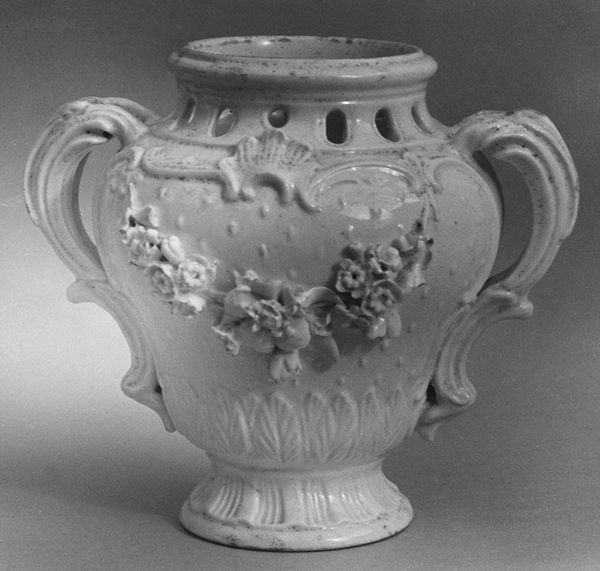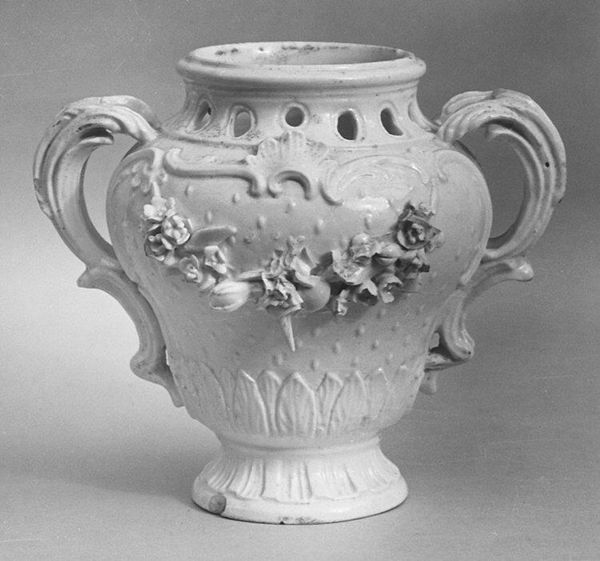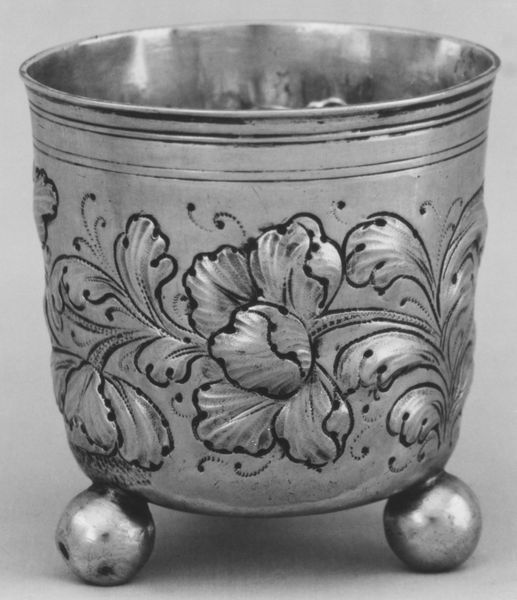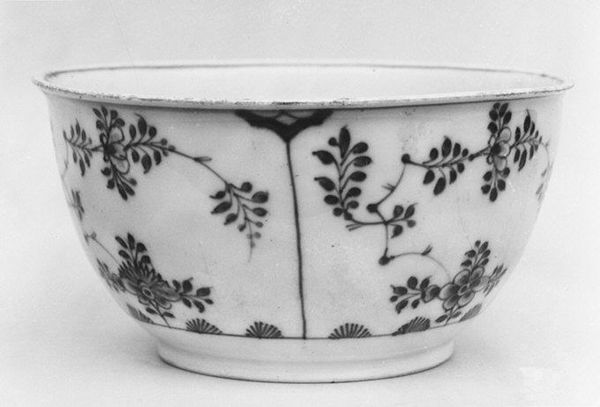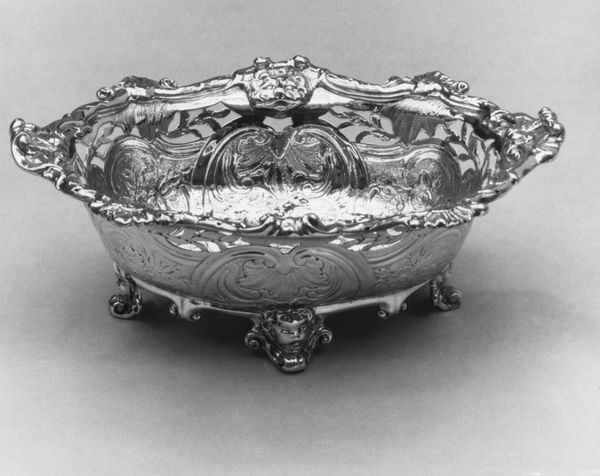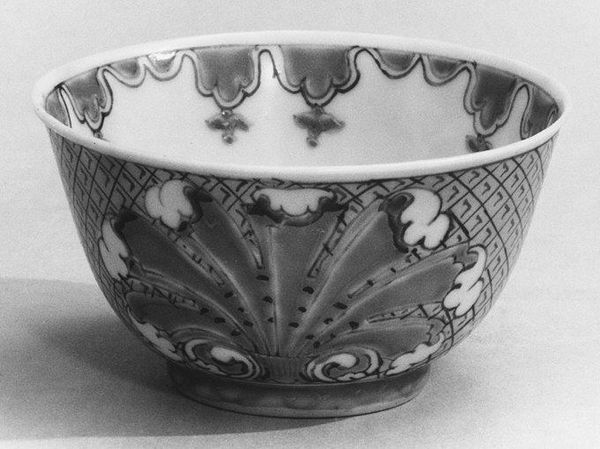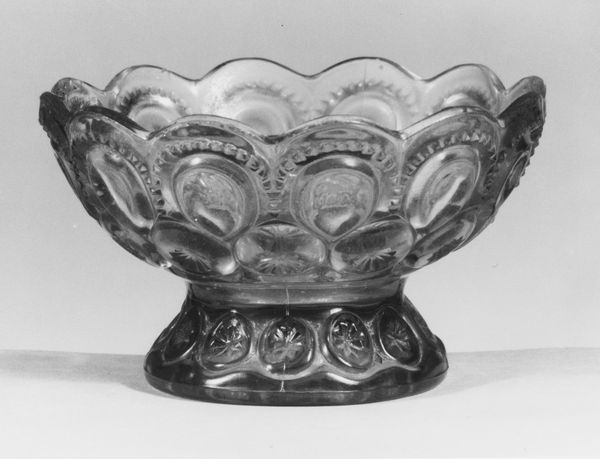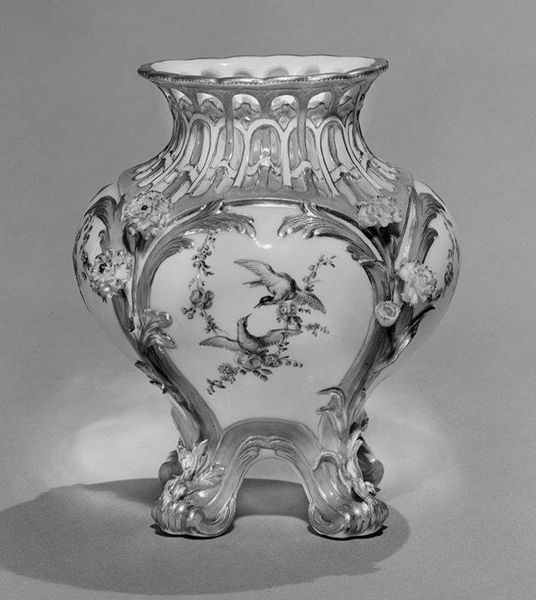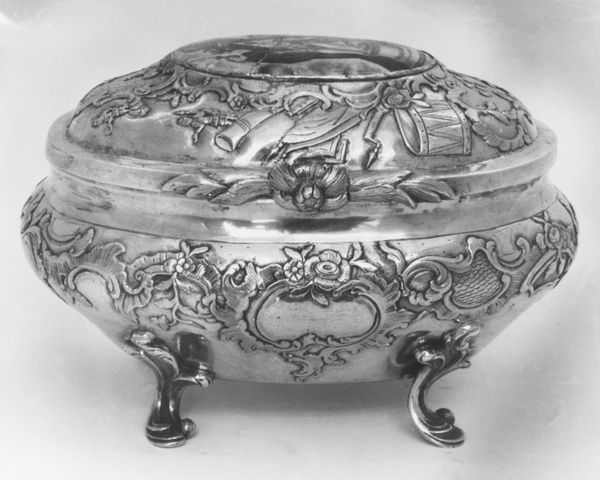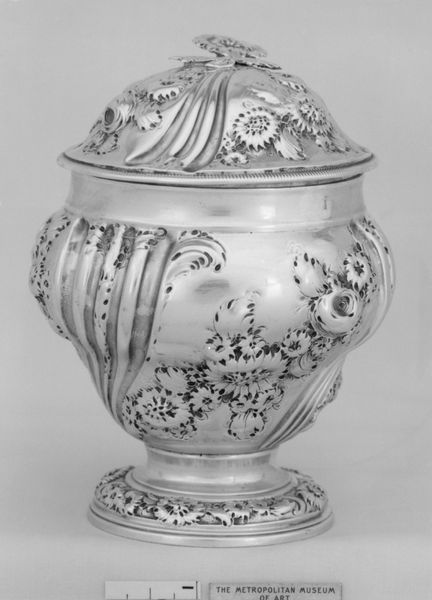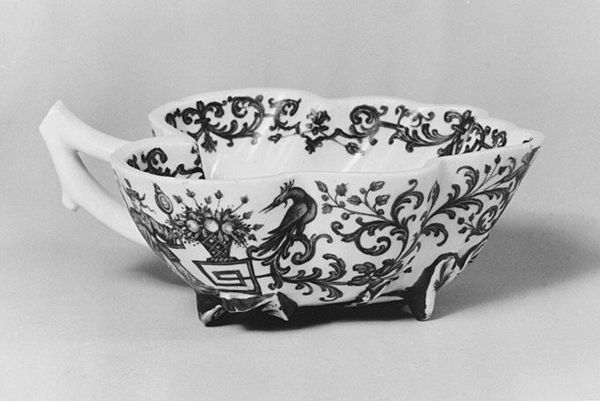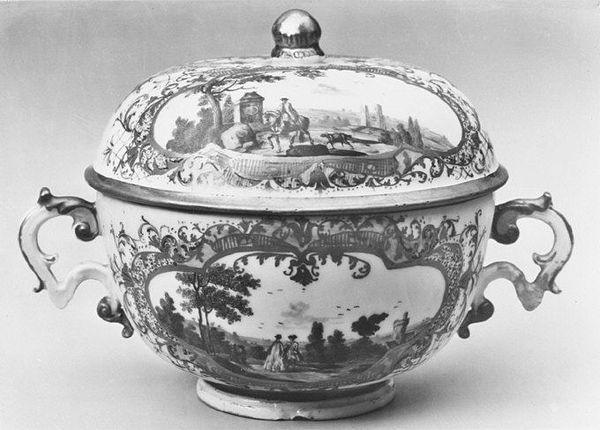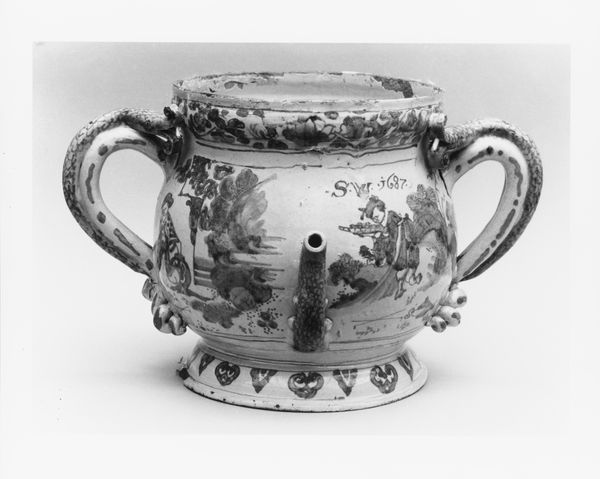
ceramic, sculpture
#
3d sculpting
#
animal
#
3d printed part
#
sculpture
#
ceramic
#
flower
#
sculptural image
#
black and white theme
#
stoneware
#
black colour
#
sculpture
#
black and white
#
black object
#
macro photography
#
decorative-art
Dimensions: Height: 7 1/2 in. (19.1 cm)
Copyright: Public Domain
Editor: This is a stoneware wine glass cooler, dating from around 1825 to 1835. I found it at the Met. It's decorated with animal head sculptures and flowers. It looks…ostentatious, like a symbol of wealth. What are your first thoughts on this piece? Curator: Ostentatious is a good starting point. I see a fascinating object deeply embedded in the social fabric of its time. Let’s consider this “wine glass cooler” not just as a functional item, but as a signifier of class and social performance. The floral and animal motifs—what stories do they tell about power, privilege, and the consumption habits of the wealthy? How did such elaborate items perpetuate certain social hierarchies? Editor: I guess I hadn't considered that a wine cooler could say so much. Were there particular cultural values being emphasized through these kinds of objects? Curator: Absolutely. Think about the burgeoning middle class in the 19th century. The cooler embodies aspirations of upward mobility. Owning such an item might have signaled adherence to bourgeois values. Do you think the object is participating in a system where taste is dictated by socio-economic status? Editor: That's a good question. It does seem like having something like this was a way of signalling taste and, more importantly, wealth. Are the animal figures purely decorative, or do they symbolize something more? Curator: Consider the power dynamics at play. Who controlled access to luxury goods, and how might that have impacted societal roles, including gender roles, since consumption was also heavily gendered? Can we view objects like this as props in the theater of social climbing and maintenance? Editor: I'm beginning to see this object in a totally different light now. The sculpture is less about functionality, and more about power. Curator: Precisely. Examining historical artifacts through this lens reveals uncomfortable truths. This process can make us consider present-day manifestations of consumer culture and the way we perpetuate inequalities through our purchasing choices. It’s a constant interplay between then and now, wouldn't you agree?
Comments
No comments
Be the first to comment and join the conversation on the ultimate creative platform.
